The bid to create the world's largest marine reserve, diseases threatening corals in the Caribbean, what is the best way to conserve coral reefs in Fiji, and why fish microbes matter too. Plus news of DNA sequences extracted from a 400,000 human ancestor in Spain, contraceptive pills for men, pain-free injection patches and the brain basis of dyslexia...
In this episode
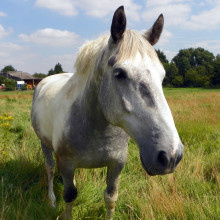
- Which animals sweat?
Which animals sweat?
Nikki - Hi. My name is Nikki and I live in Perth, Western Australia. My question is, what type of animals sweat? I know that horses do, but do others too?
Hannah - So, sweat - do the birds and bees do it and even educated flees? Or is sweating just limited to humans and horses?
Jonathan - My name is Jonathan Holmes. I'm fellow of Queens College in the University of Cambridge and I'm a part time lecturer in veterinary anatomy. Humans have two sorts of sweat gland and two sorts of sweat. The first type with which we are most familiar are in our skin all over the body and produce watery droplets. The droplets evaporate from the surface and cool the skin so they are important in regulating our body temperature. This sort of sweat gland and sweating however is very uncommon in animals. Very few animals use sweating to keep their bodies cool. A second type of gland forms sweat by breaking off bits of cell rather than secreting a droplet. The product is much more granular and fatty. In humans, this is the smelly sort of sweat we associate especially with our armpits. Most animals do have this sort of sweat gland, but they are fairly few and far between and mostly concentrated around the face and mouth, and around the anus. They seem to be important for keeping the skin soft and flexible. Dogs and cats incidentally have a large number of these sweat glands on their footpads. They're probably there to keep the pads which are just very thick skin, supple, but may also help with grip in the same way that we lick our fingers to make them slightly moist when counting bank notes or turning pages. As Nikki has noted, horses do sweat abundantly. There is a type of protein related to albumin in their sweat which often causes it to froth.
Hannah - Thanks, Jonathan. So, humans can sweat out as much as 10 to 14 litres per day and they mainly due this to reduce their body temperature by evaporating water from their skin. Plus, they secrete a second type of sweat to release a more oily fatty fluid that eventually smells and can be used as a territorial marker or signal fear and anxiety. Most other animals don't do the first type of sweating. Instead, dogs pant for example to keep cool. But most animals do have the second type of sweat, oozing out of areas of their body and the fat is also keeping the skin soft and supple. With what question sweated out, we turn to this...
Paul - Hello. My name is (Paul) in the Northwest of England and my question is, do smaller organisms evolve faster than larger organisms?
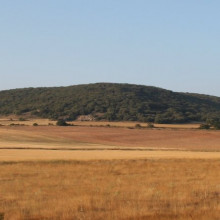
01:12 - Oldest human ancestor DNA sequence
Oldest human ancestor DNA sequence
DNA from humans ancestors alive 400,000 years ago have had their mitochondrial DNA sequenced.
For the first time, researchers have extracted and sequenced the mitochondrial DNA from an incredibly ancient human ancestor, and it's offering up a  whole new way of looking at human evolution.
whole new way of looking at human evolution.
The findings published this week in the journal Nature come from a team at the Max Planck Institute for Evolutionary Anthropology in Leipzig in Germany.
The ancient fossils come from Spain, at a site called Sima de los Huesos, the "pit of bones", which must be one of the most difficult places to work: to reach it the scientists had to crawl for hundreds of metres through a network of tiny dark tunnels, then drop down a 13m vertical shaft.
But it's because of their inaccessible location that the bones have been so well preserved. Humidity in the cave system is close to saturation and the temperature is a constant 10.6 degrees C, year round. That no-one else had ventured that far into the cave, meaning the remains had not been disturbed, was also a factor.
Advances in sequencing techniques mean it's now possible to reconstruct mitochondrial DNA from such ancient, degraded samples. Previously it was only possible to get such ancient DNA from samples preserved in permafrost.
Based on their physical shape, it was thought that the fossil bones came from Neanderthals, or at least a close relative. But the DNA sequence revealed the fossils are in fact closely related to another, highly mysterious group of early humans called Denisovans, which until now were only known from a fragment of DNA in a 41,000 year old finger bone from Asia. These were thought to be the Asian "cousins" to European Neanderthals.
Now the question is how did the Denisovan DNA end up in hominins in Spain?
There are various possible explanations. The "pit of bones" fossils could represent a group distinct from both Neanderthals and Denisovans. Another more likely scenarios is that they could be related to the ancestors of both Neanderthals and Denisovans. Or, it could be a case of inbreeding between "the pit of bones" people and another group of as-yet unidentified early humans that brought Denisovan DNA in from Asia.
There are problems with using mitochondrial DNA - for example, it's now know that interbreeding did take place between Neanderthals and modern humans, but there is no sign of that left behind in our mitochondrial DNA today.
What researchers really need now is to sequence some nuclear DNA from these "pit of bones" people. That could help clear up this muddled picture of early human evolution.
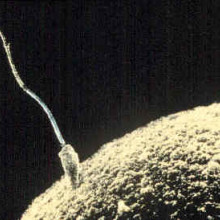
03:57 - Key to male contraceptive
Key to male contraceptive
A means to block male fertility that doesn't involve potentially harmful hormone treatments has been unveiled by researchers in Australia and the 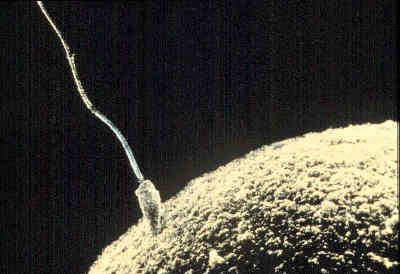 UK.
UK.
A male equivalent of the female oral contraceptive pill has long been sought-after by scientists. But, so far, every attempt has failed, owing mainly to the risk of significant side-effects or concerns over long-term impacts on fertility.
The problem is a harder nut to crack than the creation of the female pill because unlike a woman's ovaries, which contain at birth all of the eggs she will ever need, sperm are made continuously throughout life.
Interfering with their production could therefore carry genetic or other risks for future offspring. Instead, a study published this week proposes an alternative approach: targeting the process that carries sperm out of the testes.
Writing in PNAS, Monash University scientist Carl White and his colleagues have switched off - in experimental mice - two genes encoding chemical receptors called P2X1 and the alpha 1a adrenoceptor.
These are expressed on the smooth muscle cells that line the vas deferens, the muscular tubes that connect the testes to the urethra so sperm can leave the body. Waves of nerve impulses triggered by sexual activity are communicated to these muscles thorough their P2X1- and alpha 1a adreno- receptors.
This provokes the muscles to produce peristaltic responses that propel sperm along. But male mice in which these genes had been deactivated, despite multiple successful matings, were unable to father offspring.
Their sperm, however, remained healthy and viable and the team were able to use it to do the equivalent of mouse IVF, fertilising eggs in vitro to produce heathy pups.
Although no one would advocate deactivating genes in a human for contraceptive purposes, according to the Monash team, it should be possible to use drugs to mimic the effects seen in the mice.
Encouragingly, there are already drugs available to block alpha1 adrenoceptors, although none are yet available to block P2X1 receptors, which the researchers think might take up to ten years.
Another problem with the present approach is that these chemical receptors are not exclusively active in the testes and are instead employed throughout the body where they help to control blood pressure and heart rate among other things.
A therapy targeting this system might therefore have a range of undesired systemic side effects. That said, the experimental animals showed few if any consequences, suggesting that a male contraceptive pill might be under a decade away...

07:02 - Quick Fire Science: Renewable Energy
Quick Fire Science: Renewable Energy
The UK government has this week announced changes to its subsidies for renewable energy generation. But how much energy does the UK generate using renewables? Here's your quickfire science on renewable energy with Dominic Ford and Dave Ansell.
- Before the industrial revolution all energy was renewable, plants, wind, water and animal power all coming originally from the sun.
- But the burning of fossil fuels allowed our society to access far more energy. Despite this many of the early electrification projects were renewable.
- In 1878 the world's first hydroelectric power scheme was developed at Cragside in Northumberland, and the first wind generator was built in 1887 in Scotland
- But after this fossil-fuelled power generation grew far faster, so that today hydro-power is only 6.5% of US energy generation.
- Since the late 1990's there has been a renaissance of renewable power.
- In the whole of the 1990s, about 250MW of wind turbine capacity was built. But in 2012 alone, nearly 8000MW of wind turbine generating capacity was installed.
- Today, 7.5% of the UK's electricity is generated by wind - a figure that is rapidly rising.
- In recent years, solar power generation has grown even faster. In 2012, 600MW of generating capacity were installed, compared to only 5MW three years earlier. However, this is still only about 0.4% of total energy generation.
- Germany has seen a much larger growth, and today is generates over 25% of its power using renewables.
- The price of solar panels has dropped by 50-60% in the last 2 years.
- In countries sunnier than the UK the cost of electricity from solar panels is rapidly approaching the cost of buying electricity from the grid, so it may soon pay to install them, even without subsidies.
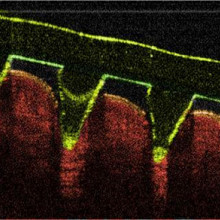
09:14 - Painless injection skin patches
Painless injection skin patches
with Ryan Donnelly, Queen's University Belfast
Many medicines are administered by injection, but syringes are very costly and needles are unpleasant at the best of times. Ryan Donnelly from the School of Pharmacy at Queen's University in Belfast has come up with an alternative way to deliver injectable drugs using skin patches. He spoke to Chris Smith.
Ryan - On the surface of each of these patches we have arrays of tiny needles called micro-needles. These are less than a millimetre in height. Whenever we press them into the skin, they don't cause any pain or bleeding, but they swell in the fluid in our skins. This allows us to deliver medicines from an attached patch containing the medicine and the medicine can then be absorbed or have a local effect in the skin.
Chris - How big are these patches?
Ryan - We can make them from 1 square centimetre to the size of a postage stamp, right up to 25 square centimetres, depending on the medicine we may wish to deliver and how much we want to deliver.
Chris - What sorts of things can you put on to the patches? Will they take any kinds of medicines or vaccinations?
Ryan - By and large, they will. Once we modify their properties to tailor them to the medicine we wish to deliver. Obviously, there is a lot of interest at the minute about actually making vaccination safer in the developing world. There are around about 2 million healthcare workers in the world injured per year by needlestick injuries. Very often, needles aren't disposed of properly, which can cause problems for people just by coming into contact with them and whatever diseases might be on them from other people. So, we now have something that is self-disabling in that when it's pressed into the skin, it swells, and it becomes soft. So that when we take it out of the person's skin, it could never be stuck into somebody else.
Chris - Can it work in reverse as well because, you mentioned people getting needlestick injuries - one of the reasons needles are also used is to take blood out of people. Can your patches as well as putting drugs into people take fluid out of people for analysis?
Ryan - Yes. What's known is that the concentration of medicines in our fluid of our skin is imbalanced with the concentration in our blood. And because our micro-needles work by swelling in this fluid, we also extract whatever is in the fluid. So, it could be a way of doing monitoring without taking blood from a person and this might be particularly useful in premature babies, for example, who are generally on a lot of medicines, need a lot of monitoring, but have a limited volume of blood, and very fragile bodies.
Chris - So, you better tell us, what are these things made of, if you can, without blowing your patent?
Ryan - Sure. We have made these micro-needles from a polymer, plastic type material. It's actually the same stuff as is used in the adhesive in some toothpaste to keep the active ingredients on your teeth for longer, and also in denture adhesives.
Chris - How do you actually make the needles? Tell us about the structure of them.
Ryan - Yes. So, what we do is we take a little mould that we've used a laser to engineer. So, the laser drills holes in a piece of silicon and we then take a gel that we've made from this denture adhesive material. We cast it into the mould by either using a vacuum or a centrifuge and then allow the water to dry off. That then forms the micro-needles which are hard in the dry state, but rapidly taken fluid to form a jelly-like material, very similar to a soft contact lens.
Chris - And if I wanted to impregnate them with a vaccine or something, how would you do that?
Ryan - What we would do is we would simply take a conventional and flexible patch like the transdermal nicotine patches, for example, and we would put our vaccine or our medicine into that and then simply apply that to the upper surface of the micro-needles. Such that when they swell, they open up a pathway for the medicine to move down through into the skin where it can be either absorbed by the circulation in the skin or target the immune presenting cells in the skin, and therefore, have a potent immune response for vaccination purposes.
Chris - And does it work? Have you got some tests showing that you can immunise people with this?
Ryan - We have evaluated it in a range of different pre-clinical studies, including suitable animal models, and we've done safety studies in people. All of these investigations indicate that this would be a technology that will have many benefits. The key point of course is to be able to go from a lab scale to an industrial scale. I'm very pleased to tell you that the Biotechnology and Biological Sciences Research Council have recently awarded us 3 quarters of a million pounds to scale up the manufacture of the micro-needles.
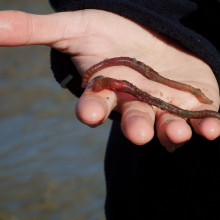
14:08 - Microplastics compromise marine worms
Microplastics compromise marine worms
with Stephanie Wright, University of Plymouth
Tiny fragments of plastic could pose a serious hazard for sea life. Researchers from the Universities of Exeter and Plymouth found that plastic fragments can reduce the amount of food eaten by an important and common marine creature called the lugworm. Stephanie Wright was one of the researchers and she spoke to Helen Scales.
Stephanie - Basically, we went to collect lugworms from the beach. We also brought them back to the lab with some natural sediment. We wanted to see whether these tiny pieces of plastic, which can be smaller than a grain of sand - these microplastics - could cause any harm at all to important species at the bottom of the food web, which is why we focused on the lugworm. And so, in the lab, we maintained them in sediments, some were exposed to sediment containing different levels of microplastics which overlapped with some environmental levels. And then we kept them in these conditions for about 4 weeks, making observations throughout that time, and at the end, we also quantified their energy reserves as well. What we found is that actually, with very high levels of microplastics, the lugworms reduce their feeding activity. In some levels, which overlapped those reported for the environment, they actually had a lower amount of energy available for important processes such as growth and reproduction.
Helen - So, these microplastics, these tiny fragments of plastics, we do find these in the marine environment. They are out there, aren't they?
Stephanie - That's right, yes. Actually, trends have so far indicated that their abundance in the marine environment is increasing and they can be in the sea surface, in the water column, in the seabed. So, they really are widespread.
Helen - Where do they come from?
Stephanie - They tend to mainly come down from the breakdown of larger plastic items. Everyone knows that plastic litter is an issue for the sea. Scientists have found out this actually breaks down over time into smaller and smaller pieces, into fragments of plastic. We also actually get microplastics purposely manufactured to be of a microscopic size - and that's for products such as skin exfoliators, say for toiletries, toothpaste and also, even clothing. They produce lots of synthetic fibres which come out of your washing machine effluent into the sea. So, it's actually quite a wide range of sources.
Helen - Essentially, these lugworms are almost getting plastic constipation, perhaps. Is it the bulk of plastic inside them that we think is having this effect or could it be something else? Is there something on the plastic that maybe is affecting them chemically?
Stephanie - The plastic we chose to work on we selected because it was free of chemicals. It was free of any additives that could be incorporated during manufacture, because we are interested in the physicality - the presence of that particle itself and what that could do. So essentially, it's taking a broom in the digestive passage. So, in the stomach of these worms, which would normally be a space for nutritional plant matter or sediment grains laden with a vital resource, but what we found is actually this microplastic is taking up space and these worms, they're exerting energy trying to digest them.
Helen - What's the consequences of this study in understanding more about the impacts of microplastics? How does this translate back to the oceans and perhaps ultimately, back to ourselves as well?
Stephanie - This species in fact is very important, it churns the sediment through its feeding activity. So, when you see those casts on the beach, that's a product of it reworking the sediment, like earthworms in soil. So, it's very important to maintaining their health. So, any impacts on it seeding actually, it could have knock-on effects of the animals which live in the sediment. In terms of the wider implications, there are lots of other species that feed in a similar way, that ingest sand and don't show any selections. So, if the plastic is there, they could ingest this, things like sea cucumbers and certain crab species and other worm species. So, there are much wider implications but I think the key thing is, this is at very high levels and we just need to prevent those levels from being reached in the environment so that this doesn't happen.
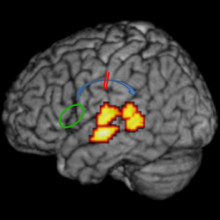
18:21 - Brain scan insight into dyslexia
Brain scan insight into dyslexia
Dyslexia is down to a connectivity problem between different parts of the brain that decode language, scientists in Belgium have 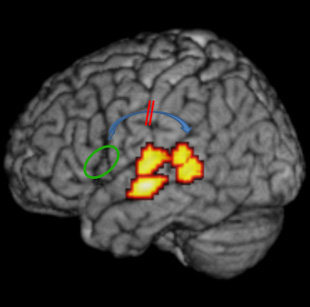 shown.
shown.
Dyslexia is not a new disorder. In fact, the first case was documented in the UK in 1896 by Pringle Morgan, who described in the British Medical Journal a "case of congenital word blindess." Now doctors and scientists estimate that up to one in ten people might be affected.
The condition is most visibly manifest as difficulty with reading, but dyslexic individuals also have problems with comprehension of information presented verbally too. So neuroscientists think that, when we read something, we first convert the written word into the equivalent spoken sounds in our heads, before decoding them as if what we had been reading had instead just been said to us.
It wasn't clear whether the problem in dyslexia is that the brain fails to form accurate neurological representations of sounds, or whether the interpretation of those sounds is the issue.
To find out, Leuven University researcher Bart Boets and his colleagues, writing in Science, used a functional MRI (fMRI) scanning technique to compare the neurological signatures created by the brains of 23 dyslexics with 22 non-dyslexics when they listened to a series of nonsense words spoken by 4 different individuals.
A series of different brain regions lit up in response to the stimuli, showing that they were involved in decoding the sounds, but there were no differences in the integrity of those neurological signatures between the brain areas in both the normal and dyslexic participants.
"This told us that there was no evidence that dyslexic people make poorer neurological representations of presented sounds," says study co-author Hans Op de Beeck.
If the brain is accurately mapping out presented sounds in various brain areas, then could the problem in dyslexia instead be that the ability of those different brain areas to exchange information amongst themselves through nerve connections is impaired in some way?
To find out, the team then reanalysed their data looking at the connectivity between the different brain areas. This can be done by looking at how tightly activity in one brain area mirrors activity in another area when stimuli are presented.
This revealed a significant deficit in a part of the brain's wiring loom called the arcuate fasciculus, which carries connections between a range of brain areas involved in speech and language functions.
"There was significantly reduced white matter integrity of the left arcuate fasciculus in dyslexics," says Op de Beeck. "This result provides neuroanatomical evidence that corroborates the deficiency in functional connectivity."
Intriguingly, the team found that their connectivity measures could account for over a third of the variance in reading and spelling abilities in their subjects, and they predicted dyslexia with an accuracy of 73%.
A reduction in brain connectivity, the team say, "impedes efficient access to otherwise intact representations of speech sounds, hampering a person's ability to manipulate them fluently."
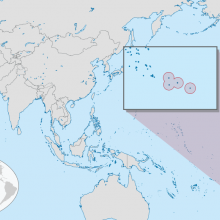
22:18 - The Pitcairn Islands marine reserve
The Pitcairn Islands marine reserve
with Simon Young and Melva Evans, Pitcairn Islands. Elisabeth Whitebread, Pew Charitable Trust's Global Ocean Legacy project
The fifty residents of the Pitcairn Islands, a British Overseas Territory, are trying to create the world's largest marine reserve. Representatives Simon Young and Melva Evans visited Cambridge recently to put their case to the  British government. Kate Lamble went to see them.
British government. Kate Lamble went to see them.
Melva - Our forefathers were men of the sea and our foremothers were the intrepid women of French Polynesia. It's incredibly important to us that we have a good environment, that we have clean disease-free fish to eat. But we've also got fabulous coral formations. And so, we're here because we are both passionate about getting this marine reserve established and we'd like to convince the British government to give their thumbs up to our proposal.
Kate - I had to look Pitcairn up on a map I have to be honest. You zoom out and it's just blue and you zoom out a bit more and it's just blue, and you zoom out a bit more, there's still this blue. It's literally in the middle of the Pacific Ocean. So, you can imagine by looking at a map like that, how important the sea must be, how is it involved in your day to day lives?
Simon - When you're on Pitcairn, you're right. It's just a little dot in the middle of the ocean. It's only 1 mile by 2. We are absolutely defined by the ocean and we live off the land and the sea.
Melva - The sea is the only way we have in and out of Pitcairn. We don't have an airport. Our closest neighbours are 300 miles away in French Polynesia. To get there, we have to travel by ship for 2 nights and 1 day and then take a ferry across the lagoon in Mangareva, to the airport there. Then it's 5.5 hours to Tahiti, another 8.5 hours to Los Angeles, another 10.5 hours to London. Not only do we travel that way, but all our supplies. What we can't grow on Pitcairn comes in via the ship from New Zealand.
Kate - Being an island that's, as you just said, defined by the ocean, why has preserving it become important now? Are you viewing the sea as it being under threat and that's why you want the marine reserve or is it a precautionary measure?
Simon - People who have lived on Pitcairn Island for the last 220 years have always treated the ocean with the greatest respect. So, I think it's precautionary to ensure that it's there for not only the future generations of Pitcairners, but also, on a global scale.
Melva - The National Geographic Expedition of 2012 has shown that we have pristine reefs in our areas. We would like to protect that. Now, we don't want to wait until we get to a point where we have to search for funding to do restoration or remediation. It just makes sense to protect it.
Kate - Let's say you got the marine reserve. What would it mean to the people of Pitcairn? What difference to the community would it literally make on the ground?
Simon - It would mean that we wouldn't have to entertain the idea of having to deal with fishing vessels. We wouldn't have to consider those applications anymore because we are intending on establishing the entire EEZ more or less. EEZ is the Exclusive Economic Zone that exists around all nations, which have got ocean around them, and so, this extends normally for 200 miles unless you hit somebody else's EEZ. Pitcairn has 3 other islands in the group, also separated by hundreds of miles. So, this is why, together, Pitcairn island has an enormous EEZ, relatively speaking, for 50 people who live there, of over 800,000 square km, so that's very large.
Elisabeth - My name is Elisabeth Whitebread. I work with The Pew Charitable Trusts Global Ocean Legacy programme. Pew is an American NGO but in our London office, one the projects we work on is setting up marine reserves around some of Britain's overseas territories.
Kate - Why Pitcairn? What's so special about the waters around Pitcairn that we couldn't find anywhere else?
Elisabeth - One, Pitcairn genuinely is incredibly special when you look at the rest of the world's oceans. So, we conducted a joint expedition with the National Geographic Society last year and they had with them scientists who have dived all over the world. Some of them 5,000-6, 000 dives under their belts. They came up at the water literally like laughing, smiling, so excited by what they'd seen because Ducie, which is one of the islands in Pitcairn, it's the most southerly coral atoll in the world. In places, it has 100% coral cover. It has one of the highest percentages biomass of top predators of anywhere in the Pacific. It is as near to pristine as you can get. We're so used to seeing oceans that are over exploited that the Pitcairn islands are really exceptional. The other reason is that we can, and this is something that we really believe in a Global Ocean Legacy that we need to protect what we can now. On Pitcairn island, we have a really unusual situation where we have unanimous support of an entire community to create what would be the world's largest strictly protected marine reserve. We have an opportunity here for the British government to do something really good.
Kate - For you guys who live on the island, when the divers came back and said, "We've been doing this for so long. We've never seen anything like this." Did you guys know what was down there? Had you been diving?
Melva - No. We've not done much diving at all. We'd always thought we had something special. I mean, there are areas down there that you could go fishing and you would be guaranteed a catch. So, there must've been something special down there. We had no idea that this reef that they discovered, which was - was it 30 meters down? - which is twice the usual depth of a reef. And then we saw the film footage and were just blown away. I'm sorry. It was incredible. We knew that we had to do something to protect it.
Kate - We talked earlier about this being the largest marine reserve anywhere in the world. How is this zone, which is so large and so remote, enforceable?
Elisabeth - Clearly, you can never have perfect enforcement. You know, just because we have laws against robbery and people still steal things. But there are emerging technologies that are making this a much more cost-effective problem to solve. So, we're investigating solutions connected to satellite technology and even things that seem relatively low tech, like just making sure that you have an adequate legal infrastructure in place, is very important. So, Pitcairn has actually a great opportunity to be a test case for a lot of these things because if you can enforce in Pitcairn, you can do it anywhere.
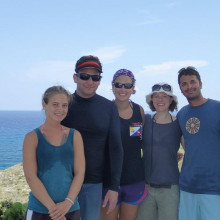
29:26 - Caribbean corals under threat
Caribbean corals under threat
with John Bruno, University of North Carolina
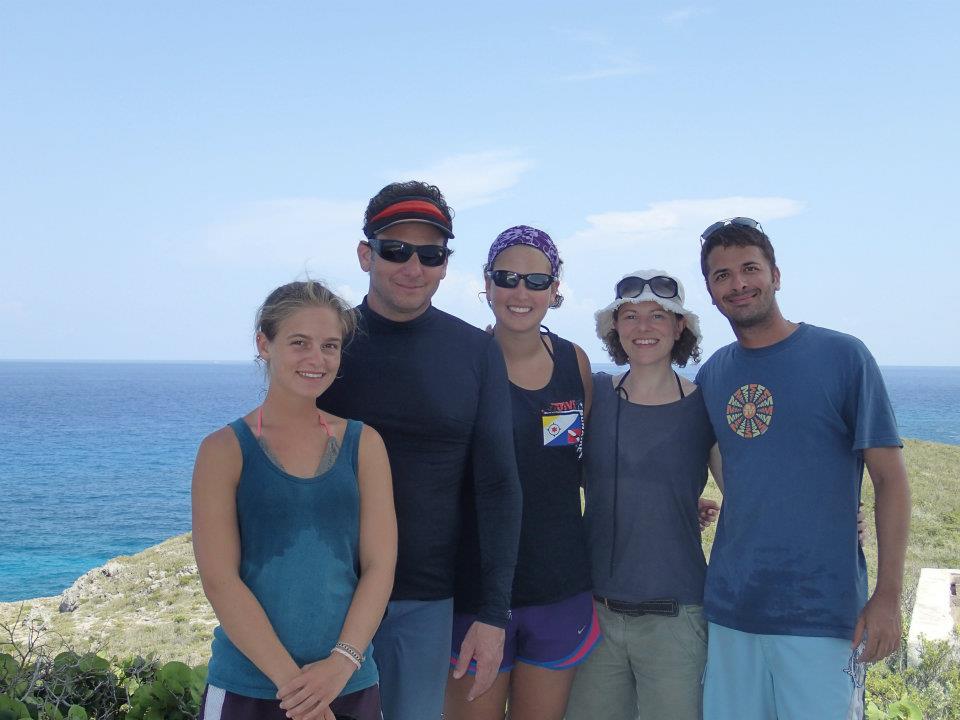 Helen - So, there are many threats facing the oceans around the world from pollution and climate change to over fishing and coastal development. We need to understand how those threats are having particular effects on marine habitats and species if we're going to find ways of successfully protecting them.
Helen - So, there are many threats facing the oceans around the world from pollution and climate change to over fishing and coastal development. We need to understand how those threats are having particular effects on marine habitats and species if we're going to find ways of successfully protecting them.
Chris - Helen, obviously coral pays a very big part in that, but what actually is coral? I've never really understood these.
Helen - Corals and reefs, yes. A lot of people look at a piece of coral and perhaps think it's a dead bit of rock. But in fact, it's a living animal. It's a tiny microscopic animal. A relative of anemones that you might have seen in a rocky pool on the beaches around the British Isles, but very, very much smaller and they secrete calcium carbonate, chalky skeletons essentially and they build reefs. So, the reefs are built by these colonies of animals and they're very important for various reasons for the biodiversity hotspot that coral reefs are. But unfortunately, one of the most endangered marine ecosystems we have are the coral reefs in the Caribbean where there's been a massive die off in one of the main species or two of the main species of coral that build the reefs. One of the main suspects for that die off is the spread of coral disease. Well, awhile ago, I paid a visit to Abaco Island in the Bahamas and had the rather wonderful job of going diving with Professor John Bruno from the University of North Carolina.
Chris - Do you ever get all the best jobs? I don't know how you do it.
Helen - You know, that's marine biology for you. You could've done it. Anyway, I was there basically to find out more about how and why the reefs of the Caribbean are in so much trouble.
John - So, Caribbean reefs have changed dramatically since the 1980s. I grew up in South Florida and in the '70s and early '80s, you could snorkel over a coral reef and it was just like a golden wheatfield of coral that's incredibly complex community that the corals had built up. It was inhabited by fish and all kinds of invertebrates. So, a really biodiverse ecosystem. That changed enormously and you don't have to be a scientist to recognise that. So, the corals have all disappeared. There are still some left, but they're far less abundant than they were just 2 or 3 decades ago. There's a variety of causes for that. The sea is warming, leading to a phenomena called 'coral bleaching' that kills the corals. There's sediment pollution, in some cases, possibly nutrient pollution. But here in the Caribbean, the really big driver of coral loss is coral diseases. One disease in particular, White-band disease, wiped out what were then the dominant species, the staghorn coral and the elkhorn coral. Their populations have plummeted by 99%. So just envision kind of like a Carolina or Southeastern US pine forest where the whole forest is made up by a couple of dominant species and then within 12 months, boom, those species are just gone. It just completely transforms the landscape. There's certainly other things going on, but when you lose those key stone species, those what we call "foundation species" that built up the whole system, it's fairly easy in this case to point to one primary cause.
Helen - If we're looking out for diseased corals, what are we looking for? What are the key signs?
John - Yellow blotches on some of the corals are tell-tale sign of coral infection, dead portion of the coral crowning where the coral is either white because the tissue has died off or they've lost their symbiotic
zooxanthellae. Some of the coral diseases are these very clear black bands. So usually, some sign of infection, either a white or a black band on the coral. So, the signs of infection aren't subtle. It's quite obvious that something is different and there's only really half a dozen common diseases in the Caribbean. So, it's actually quite easy to kind of identify them.
Helen - Alright. Well, I think it's time we went in and see what we could find.
John - So, there's really no question that disease was one of the primary drivers of coral loss in the Caribbean and it's still really a big mystery. We don't know what many of the pathogens are that cause the disease. So, we don't know what the bug is, what the infection agent is in many cases. Even when we do, we don't necessarily know why it's become so common. And so, it's really kind of hard to nail down whether there's a new pathogen, whether the host is stressed out. So, you know, when we get stressed out, we become more susceptible to common colds and all kinds of diseases, or if something about the environment changes and either made the host more susceptible or one of those environmental conditions might make the pathogen more - what we call, "virulent". So, it's more able to attack the host and cause problems for it. My lab used to focus a lot on nutrient pollution and now we're focused a lot on temperature, how increases in temperature can lead to outbreaks of coral diseases. I'm also collaborating with a coral immunologist to try to understand how corals essentially fight against disease. So, corals have very simple immune systems. Essentially, how they fight off disease and so, some corals were able to fight it off and others aren't. Just like with people. Some people are just naturally resistant to colds and others are really susceptible to them. It's really still a big mystery why we're seeing these increases in diseases. We really have no idea how to manage them. So, we're kind of at the mercy of this ongoing phenomena right now.
Helen - So, we've just got back off our dive. We're just drying off and what we saw was - to me, it just seem like a landscape that showed what it used to be. You could see these huge structures that clearly used to be coral. There were big boulders that are now dead, but maybe with few patches of coral growing on them. Great big spires and turrets what I think must've been these acropora corals, the staghorn and the elkhorn. Possibly the elkhorn particularly at that site.
John - Yeah, it was incredible. I mean, there's all kind of caves and tunnels. There was so much structure. I feel like I was flying through a city from which like humanity had been annihilated. Didn't it feel like that?
Helen - It did, yeah.
John - It was just incredible.
Helen - There were some fish, but I guess not as much as we were expecting. Just no corals to speak of.
John - Yeah, very little coral, but the skeletons are all there. So, the structure they built up over the last 3, 000 or 4,000 years is all still intact. It won't be forever. So, you can see exactly what it was like just a couple of decades ago.
Helen - We saw one instance of disease. There was the white patch growing across that piece of montastrea coral I think.
John - Yeah, that's right. So, it was called "White Plague" disease. So, there was a montastrea coral with about 6 or 7 different lobes and all of them were infected with white plague and they're kind of just itching its way across the coral crown and chewing up the tissue.
Helen - But as a whole, it was this ghostly landscape. Is there a chance that the corals will come back?
John - Absolutely. I mean, there's been no coral extinctions in the Caribbean. I mean, we're threatened with seeing coral extinctions, possibly even in my lifetime, but all the species are still here. So, if we manage to turn things around, I honestly think we could be back to where we were. It may take a century or so. Yeah, we could see near complete recovery.
Helen - With Caribbean coral doing so badly in the wild, I paid a visit to the Smithsonian Marine Ecosystems Exhibit at Fort Pierce in Florida where Bill Hoffman took me behind the scenes of the aquarium to see how he's growing some of the most endangered coral species.
Bill - So, this is cervicornis, that is staghorn coral - very distinct smell which are the terpenoid compounds that they used to kind of protect themselves and make them maybe taste bad to most things.
Helen - That's the first time I've ever smelled a coral. That's incredible. So, they smell. Amazing!
Bill - This is an elkhorn coral fragment. We've started to provide them to researchers and it's pretty hard otherwise to get threatened corals to bring them back into the lab and usually to kill them or to see what kills them. But I think we're very fortunate to be able to help research as well as show our public some of these threatened species. This is the way that most elkhorns and staghorn corals in nature are propagated. In fact, it's known that within a say, 20-meter or so area of a reef, chances are, they're clones. They're produced this way. A branch breaks off. In fact, the branches are even a little bit thinner at the base, maybe to make them a little predisposed to snapping off. And then if they land in the right spot, they'll just lay on the bottom. You can see this one is dying on the bottom where it was laying this way, but what you can also see are branches growing up. If it wasn't being picked up on a regular basis, it would start to attach on the bottom side. You can see that we use epoxy. Sometimes we even use super glue to attach them to the rocks.
Helen - We've come down to the aquarium to have a look at of what's on display for the public and having just got back from the Bahamas where I was diving on wild reefs, this one is a completely different scene.
Bill - I can't speak of the Bahamas but in Florida, I sadly tell people that you'll see more corals in this aquarium than you would during an entire dive, or at least for sure, more diversity of corals than you would see on a dive. And that was truly a sad state. I think if people had better appreciation for the diversity and complexity of marine ecosystems and why they are important.
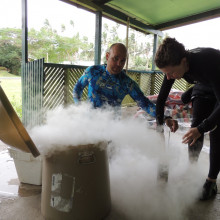
38:19 - Marine research expedition to Fiji
Marine research expedition to Fiji
with Helen Scales, The Naked Scientists
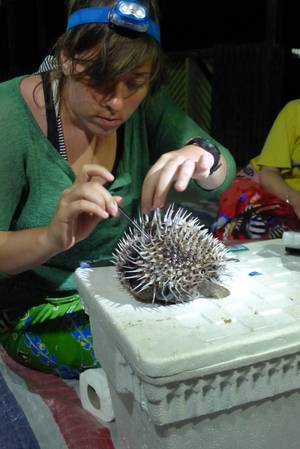
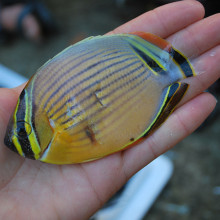
40:50 - Monitoring marine reserves
Monitoring marine reserves
with Josh Drew, Columbia University
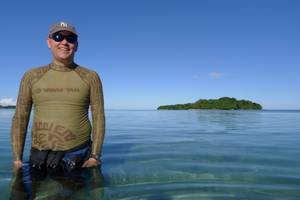
Josh - Well, what we're interested in is seeing how reserves affect the whole reef ecosystem. It's pretty obvious that if you go out and you eat fish and you get the fish by shooting them with the spear, then if you stop shooting with the spear, those populations are going to do fine. That's a no brainer and that's an important conservation impact. But what we're interested in is looking at what happens to the rest of the reef when suddenly those top predatory fish are being taken out. And so, in order to do that, we're travelling to this place, Nagigi in Fiji where they're setting up a protected area. And we're looking at what's happening before they've set it up, so that we have very, very solid baseline information. And then we're going to track the effects of that protected area over the next 3 to 5, maybe 7 years and see how that protected area matures and what are the whole reef ecosystem effects from microbes to sharks.
Chris - What is the natural structure of that marine reserve?
Josh - It's one of the reasons why I went to Fiji in the first place, is that Fijians own their reefs. So, just like you would own the land in your backyard and if somebody wanted to set up a tent there, they would have to ask your permission. If somebody wants to do something on a coral reef in Fiji, they have to ask the permission of the people who own that reef. And so, the Fijians have this custom called tambu - a period of rest for the reef where they let it go for 3 to 5 years where they don't fish on it. What we're interested in is seeing if we can look at that traditional form of reef management and imagine it as a form of conservation. So, instead of just having them not fish for a big fish or not fish during certain times of the day where they let it go completely on fish for 3 to 5 years so that the whole reef becomes a bit restored during that time period.
Chris - Would the aim be, to create a comprehensively big reserve area or given the structure of Fiji which is lots of little islands, would it be to create lots of little marine areas, and hope that one can sort of cross pollinate into the other adjacent area?
Josh - It's definitely the latter for a couple of reasons. First and foremost, because the Fijians own their reef, that means each village only have a certain area that they can fish. If that whole area was put into a protected area, then suddenly those villagers would be - they wouldn't have access to food and we don't want to unduly saddle any one village with too much of a conservation burden. So, it's definitely important that we look at this as a system of small reserves, particularly in areas close to where there are villages. There are parts of Fiji where there aren't a whole lot of people around and those might be areas where we would explore larger reserves. But a reserve is not going to be effective if the local people aren't behind it. If setting up that reserve means that they can't get their dinner then it's going to stay a reserve for too much longer.
Chris - And is your hope then that if you have a preserved area which people cannot fish and they cannot damage then this will help to seed or support adjacent areas that are being exploited to maintain the diversity and to maintain the integrity of the adjacent areas?
Josh - Absolutely. The fish that are going to be inside the preserved area are going to grow bigger. Bigger fish produce exponentially more eggs and sperm. If you provide the chance for this fish to grow big then they're going to produce tons and tons and tons of babies. Those babies are going to disperse and one of the major issues we're looking in my lab is tracking to see how closely related those different protected might be by looking at the population genetics or how the relatedness of fish from one reserve and fish in a different reserve. And then we can figure out what's the best way to space those reserves so that it form a cohesive unit and that they seed each other as you were saying.
Chris - Do we know what the anatomy of such a structure or network would have to be in order to make sure fish did transit from one place to the next to maintain the biodiversity?
Josh - Well, we're working on it. It's definitely something that is a major research interest in our lab. Some of the preliminary work I've done, the upstream areas definitely produce more export of larvae than the downstream areas. And so, it's very simple. If you look at the oceanography of the region, it makes sense to sort emphasise putting preserves in areas at the head of the stream so that the babies from those reserves are able to spread forth throughout the rest of the country.
Chris - Do we know whether all fish can transit along these - I want to say corridors between these little isolated or enclaved areas that are the reservations or is that one of the big questions because if some fish can do it but others won't do it, then we still got a problem?
Josh - Yeah, and we're seeing that there's a lot of variability within it. So, even fish that look pretty much the same in some of our preliminary results have shown to have very different patterns. What that means is we kind of have to use what scientists call the precautionary principle and then that is, we play our safest hand. And if there's several fish that have very limited dispersal or just really can't get that far out then we need to make sure that we setup protected areas that can incorporate that information so that we don't pass over them and we don't provide them an opportunity for those populations to be protected.
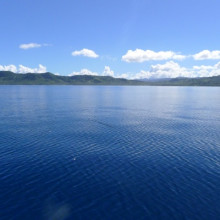
46:10 - How do marine microbes affect fish?
How do marine microbes affect fish?
with Molly McCargar, Columbia University
 Chris - Working with Josh is Molly McCargar. Now, Josh is looking at fish at the macroscopic level, what's swimming around and how many of them there are. Molly is putting things both inside the fish and on the seabed under the microscope because she's interested in the micro ecology. Hello, Molly.
Chris - Working with Josh is Molly McCargar. Now, Josh is looking at fish at the macroscopic level, what's swimming around and how many of them there are. Molly is putting things both inside the fish and on the seabed under the microscope because she's interested in the micro ecology. Hello, Molly.
Molly - Hi.
Chris - Tell us about your project.
Molly - Well, so my project focuses on herbivores on the reefs and I'm looking at specific genus in the certain fish family. They have this really interesting varied morphological adaptations to a degree, because fish don't possess all the right enzymes to digest plant matter. So, they have all these different adaptations and I'm looking to see if these differences affect the microbial communities and their intestines.
Chris - So, basically you're getting the gut contents of the fish that Josh has been studying in Fiji and analysing or asking what bacteria live inside these fish.
Molly - Right. So, the fish I'm looking at are all very closely related. So normally, we would expect their microbes to be closely related as well. But I'm looking at some that have different adaptations - morphological, chemical, and I'm seeing if these communities are different based on that.
Chris - Why might this be important?
Molly - So, these microbes are really important to reef health but we don't really know a lot about how they're dispersed. They're not very mobile. So, we're hypothesising that these animals play a role in it because of the specific adaptations that they have. So, for instance, one of the species I'm looking at actually ingest sediment and keeps it in a sort of stomach-like structure. And it uses the sediment to crush plant matter as it comes in. So, we're hypothesising that these fish will be interacting with their environment in such a way that their microbes will be spatially organised.
Chris - Do you think you could use the array of different organisms that are in the fish and in the environment as a predictor of whether a reef is under threat, whether Josh needs to get involved in other words?
Molly - Well, we're hoping to set up some indicators for that. it would be a much longer study to really get it done to the science scale we would need to to say this is exactly where the microbes are going and this is exactly the area we need to protect. But we are hoping it'll help us get a better idea of - if we see a certain amount of connectivity for some microbes in a certain area, and we notice maybe that reef is doing better than the others around them, we may be able to tell if there's some sort of correlation to the reef house.










Comments
Add a comment